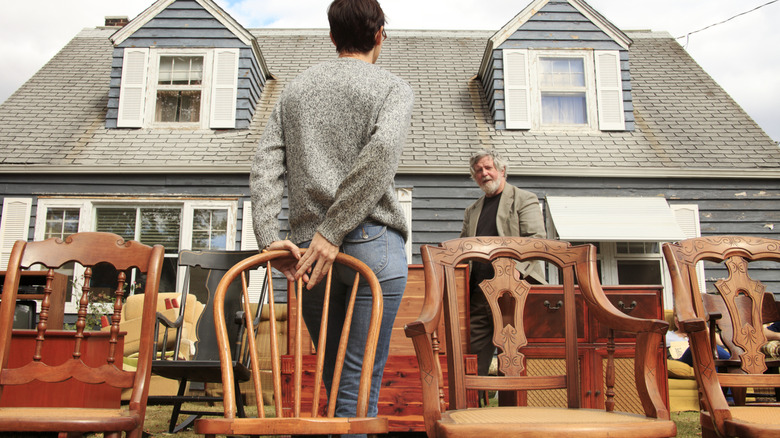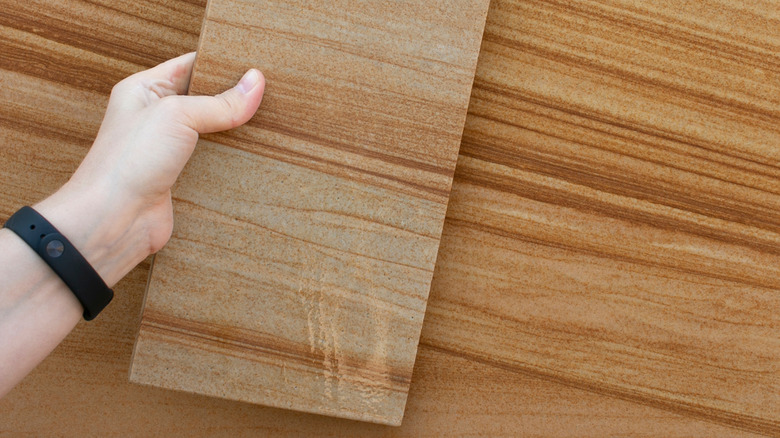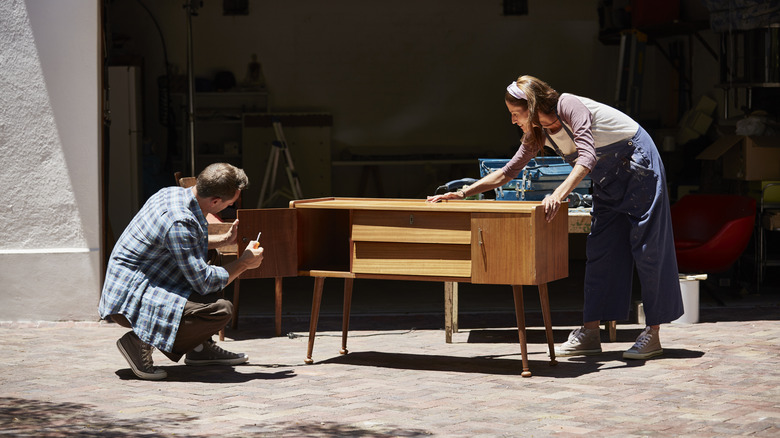Here's How To Tell What Kind Of Wood Your Furniture Is Made Of
You've found a beautiful old table at the thrift store, and it's just the right size for your room, but it needs some TLC. It's a thrift store flip you can start and finish in one weekend, but you are unsure what kind of wood you're dealing with. It's a common problem, but we have a solution. Christophe Pourny, owner of Christophe Pourny Ltd. and author of "The Furniture Bible," is sharing how to sleuth out what kind of wood you have on your hands exclusively with House Digest readers.
Pourny tells us that pine, walnut, and mahogany are among the most common species used for furniture building, and that's good news because they have beautiful patterns — and identifying and matching those patterns is the key to figuring out what type of wood you are working with. "You can find on the internet the patterns of the different essences of wood and match them to [your] furniture," he says. This information isn't just crucial for DIYers; it can be essential to know what type of wood a piece a furniture is made of before you buy it, though figuring it out in-store can be tough. Luckily, Pourny has more tips to ensure you pay the right price for your furniture.
Know what wood you're buying
Walk through any lumber yard, and you will see not all wood is created equal. Let's take those common wood species Christophe Pourny mentions: pine, walnut, and mahogany. Pine is cheap, and Pourny says that cheaper woods can be stained to look more expensive. Walnut and mahogany are noble woods and cost significantly more. You don't want to pay walnut prices for pine furniture.
Knowing the species of wood is key to seeking out the most valuable thrift store finds. While an antique dealer might be able to tell you, the clerk at Goodwill or the person running a tag sale may not be a font of information. So, you have to be ready to discover the answers yourself. "Checking labels, asking if the piece is solid wood or a simple [veneer], checking pattern of the wood can be very important and make all the difference in the quality of the piece and its value," Pourny says, speaking exclusively to House Digest.
Clean the wood to see its grain clearly
Whether you found a piece of furniture on the side of the road or inherited it from your grandmother, it may not always be in perfect condition by the time it lands in your home. Answers about its origin may be few and far between. But if you are armed with the right tools and a bit of knowledge, you can still figure it out.
"If the piece is old and the finish cloudy, it may be more difficult to determine the color and pattern of the wood," says Christophe Pourny. Surely, this is a common problem that DIYers, antique enthusiasts, and regular homeowners run into frequently. Speaking exclusively with House Digest, Pourny says, "In [an inconspicuous] place, rub denatured alcohol with a clean rag on the wood or linseed oil, and the natural look of the wood will be more obvious." Once you can clearly see the wood grain, you can match it to the samples you find online. Whether you want to keep the piece as an heirloom or are looking for a furniture flip project (Pro tip: Avoid these five mistakes when flipping furniture), Pourny's tips will make sure you get what you pay for — and know the item's worth when you put it back on the market.


